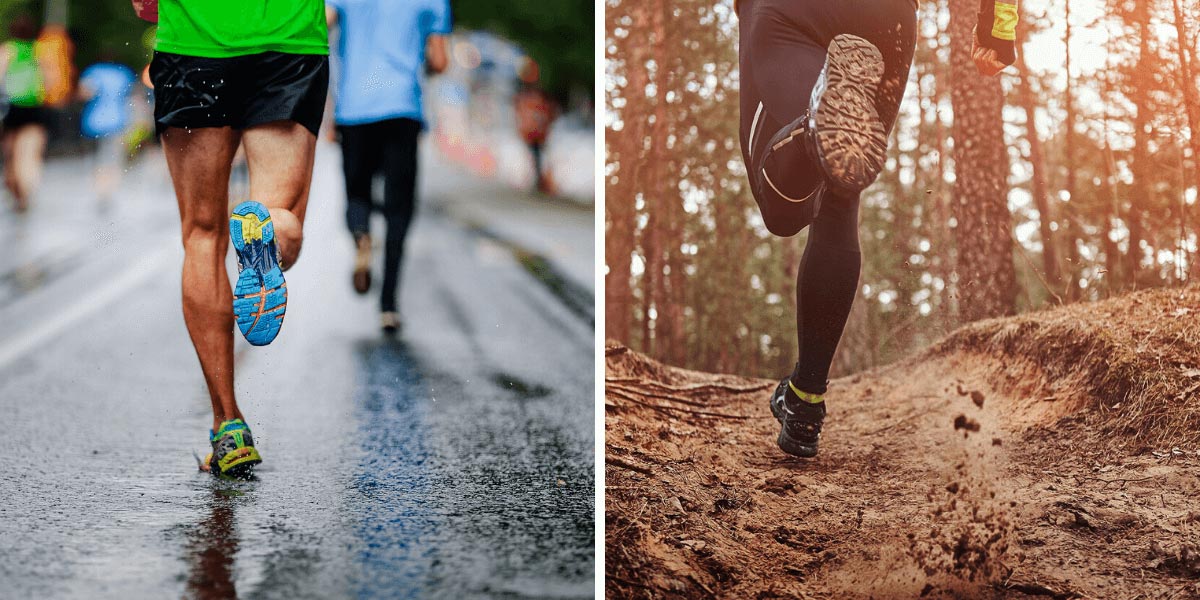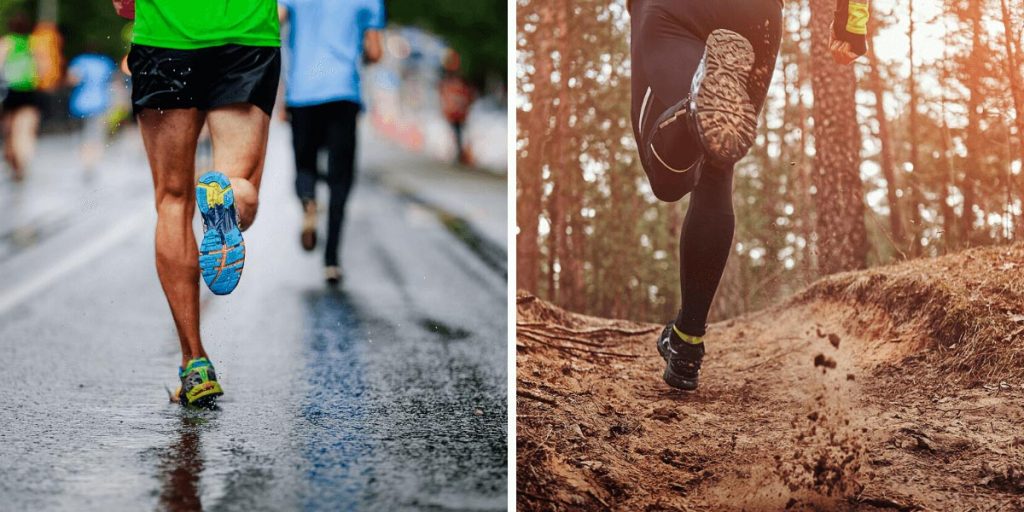
Road Running vs Trail Running
If you’re into running, you may well agree that it’s one of the best sports out there, particularly in terms of its accessibility. If you’re not a runner, and high school cross country ruined the sport for you indefinitely, then that sentence might be the most ridiculous statement you’ve ever heard. Fair enough, but there’s no denying the wonderful simplicity of running; it can be done almost any time and anywhere, with very minimal equipment. In this blog, we’re talking road running vs trail running.
We’ll be looking at longer distance (60-90 mins) road and trail running, assessing the pros and cons of each and the main things to consider. So, even if you’re currently the antitheses of a runner-lover, you may learn a thing or two and perhaps, just perhaps be tempted to give running another chance. Never say never!
Road Running
For the majority of us, running along roads is one of the most accessible forms of exercise you can do. Straight out your door, and off you go. How good is that?
Road running provides a generally flat surface, so if you’re doing longer distances it’s a brilliant way to get into the flow, focusing on your breath and your pace. If you can find a longer route with minimal traffic lights/junctions, then road running can be a great way to measure your pace over a certain distance and help you to track your progress and increase your speed. Generally speaking, the success of a road run is determined by your prescribed pace.
However, unless you live out in the countryside, empty roads to run along can be hard to come by. The idea of running for 60-90 minutes on crowded footpaths, weaving in and out of pedestrians really isn’t that attractive. In addition, the impact of running on such hard surfaces (particularly over longer distances) can take a serious toll on your legs. It’s not uncommon for road runners to suffer injuries from repetitive impact.
Trail Running
It might not come as much of a shock, but one of the huge attractions of trail running is running in the great outdoors. Getting away from it all and enjoying the surrounding nature. As beautiful as nature is, it can throw some serious hills at you, and so trail runners tend to focus less on pace and time, and more on effort level. It’s a slightly more subjective measure than a stopwatch, but after all, losing ten seconds over the course of a kilometre is the least of your worries when you’ve got tree roots and rocks to jump over!
Obstacles are, of course, a worry when it comes to trail running. Roots, rocks, mud, sand lumps, bumps; there’s plenty of ankle twisters out there, and an injured ankle can be tough to heal if you continue to run on technical trails.
However, whilst the terrain is certainly a lot less even than road running, the ground is softer and absorbs much more of the impact. As a result, overuse/repetitive motion injuries are less frequent than on road surfaces. For that reason, it can be a good shout if you’re a road runner to dedicate some of your miles to trail running to give your ankles and knees a break from the tarmac!
Admittedly, trail running is slightly less accessible than road running and can require a tad bit more fancy running gear; sunglasses (to keep branches/leaves out your eyes), gaiters (to keep stones/mud out your shoes) and even trekking poles (to help you up/down some steep slopes). Still pretty minimal kit in comparison to a $3,000 road bike, hey?
Why Not Road Running AND Trail Running?
People often say that trail and road running attract different types of people and is suggested that the two types of running are mutually exclusive. This doesn’t have to be the case! As always, variety is the spice of life; the key to keep your body guessing and your fitness levels improving.
So why not mix things up? If you’re training for a road race, throw a few trails into your training to help lessen the constant impact of tarmac on your legs. Or if you’re training for a trail event, try the odd road run to test your pace and improve your speed. Each type of running has its benefits and drawbacks, but in reality, the different styles can actually complement one another nicely!
You might also be interested…
When is the Best Time to Run in Summer?
While it’s great to run in Summer, it sure can get hot in Australia, scorching hot! We take a look at when the best time to run in Summer is.
10 Reasons Running is Good for You
The beautifully simple activity that is running can bring many more benefits than only helping to stay you in shape – here are 10 reasons.
